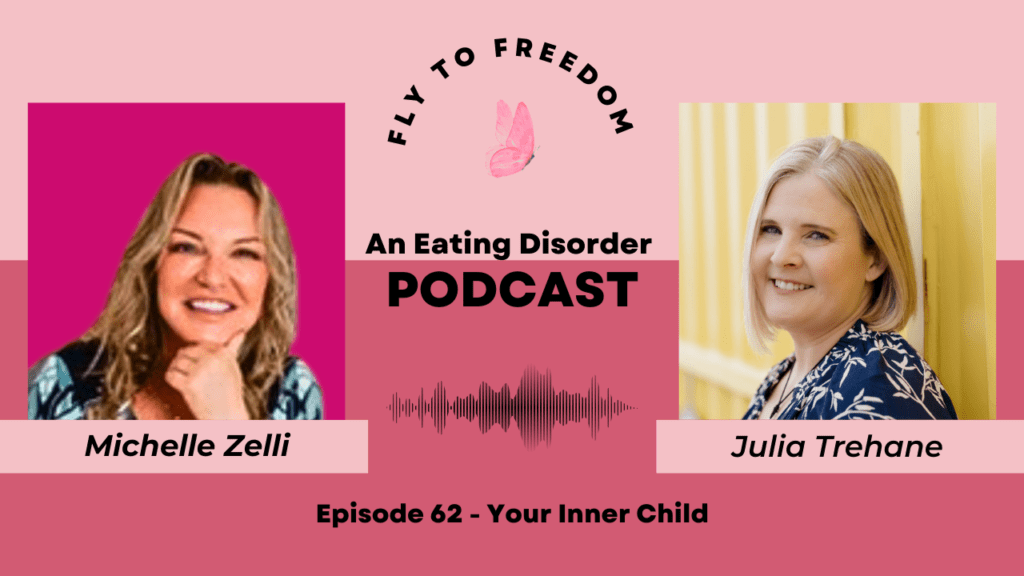Understanding the Root of Eating Disorders
Inner child healing is an important tool for recovery from anorexia.
Eating disorders like anorexia nervosa, bulimia, and binge eating disorder go far beyond just food or body image issues. At their core, these disorders often stem from unresolved emotional pain, trauma, and unmet needs during childhood. Research has shown that many individuals with eating disorders have a history of emotional neglect, attachment trauma, or adverse childhood experiences (ACEs). These early experiences can significantly impact brain development, particularly in areas related to emotion regulation and stress management.
The Adverse Childhood Experiences (ACEs) study highlights the strong correlation between childhood trauma and later development of mental health issues, including eating disorders. When emotional needs such as love, safety, and validation go unmet, coping mechanisms like food restriction or bingeing often emerge. For individuals with anorexia, controlling food intake can feel like a way to regain control in an otherwise chaotic emotional landscape.
The Brain-Body Connection: How Trauma Shapes Eating Disorders
To better understand the roots of eating disorders, it’s important to explore how trauma affects the brain. The brain develops in layers, starting with the brainstem—the most primitive part, responsible for survival functions like breathing and heart rate. As we grow, the limbic system (responsible for emotion regulation) and later the prefrontal cortex (in charge of reasoning and decision-making) mature.
The limbic system, particularly the amygdala (which processes fear) and hippocampus (which forms memories), is highly sensitive to early childhood experiences. If a child doesn’t receive consistent emotional attunement—such as affection, comfort, or validation—this system can become dysregulated. The brain remains in a constant state of hypervigilance, scanning for threats like abandonment or rejection, which can lead to emotional dysregulation.
For those with anorexia or other eating disorders, restricting food can serve as a way to manage emotional overwhelm, as controlling food intake becomes a method of self-soothing.
Inner Child Healing: Why It’s Key to Recovery
Inner child work is based on the concept that we all carry an “inner child” within us—the part of our psyche that holds our emotions, creativity, and unmet needs from childhood. When these needs are neglected or go unmet, it can lead to dysfunctional behaviors in adulthood, such as disordered eating, substance abuse, or codependency.
Many people with eating disorders have disconnected from their inner child as a survival mechanism, creating emotional defenses to avoid pain. Reconnecting with this part of ourselves, and providing the love and care it lacked, is a powerful way to heal the underlying emotional wounds that fuel eating disorders.
Through inner child healing, we can begin to re-parent ourselves—meeting our emotional needs in ways that weren’t possible during childhood. This process involves soothing the limbic system, helping to release disordered behaviors and patterns associated with food control.
The Role of Neuroplasticity in Inner Child Work
Neuroplasticity, the brain’s ability to rewire itself and form new neural connections, plays a significant role in recovery from trauma and eating disorders. With consistent nurturing experiences, the brain’s emotional centers can be reshaped, allowing for healthier emotional regulation.
When we engage in inner child practices—such as journaling, visualization, or play—we create new neural pathways that support emotional healing. This helps shift the brain out of a survival state and into a place of emotional safety and calm, making it easier to break free from the rigid behaviors of eating disorders.
Practical Steps for Healing Your Inner Child
If you’re struggling with an eating disorder like anorexia, reconnecting with your inner child can be a transformative step toward recovery. Here are five practical ways to begin:
- Journal to Your Inner Child
Start writing letters to your inner child, acknowledging their feelings and offering reassurance. This practice helps you tap into emotions that have been buried and provides insight into how childhood experiences contribute to your current struggles.
- Engage in Play and Creativity
Reintroduce playful activities that reconnect you with joy and wonder. Whether it’s blowing bubbles, drawing, or watching a favorite childhood movie, these moments help reconnect you with the part of yourself that finds delight in life.
- Reframe Negative Self-Talk
When you catch yourself being self-critical, pause and rephrase those thoughts as something a loving parent would say to a child. This practice helps create a more compassionate inner dialogue, reducing the need to turn to disordered eating as a coping mechanism.
- Use Grounding Techniques
During moments of emotional distress or flashbacks, practice grounding techniques to bring yourself back to the present. Techniques like deep breathing, reciting calming statements (e.g., “I am safe now”), or drawing and tearing up the image can help soothe your nervous system.
- Consider Working with a Professional
Working with a therapist or coach, like me, who understands inner child work, somatic therapy, and trauma can provide invaluable support on your recovery journey. Having a guide to navigate these emotional depths can accelerate your healing process.
I recorded this fantastic episode of Fly To Freedom with expert, Michelle Zelli. Have a listen by clicking the image
The Path to Full Recovery: Working with Julia Trehane
Healing from anorexia or any eating disorder is a deeply personal and emotional journey, but you don’t have to do it alone. As a recovery coach specializing in anorexia and eating disorders, I’m here to guide you through the transformative process of reconnecting with your inner child and healing the deep emotional wounds that drive disordered eating.
I offer a variety of resources designed to support you on this journey:
-1:1 coaching is my gold standard for anorexia recovery. Learn more about it here
– Podcast: Tune into my podcast, where I explore topics like inner child work, trauma healing, and anorexia recovery. I also invite expert guests to share their insights on transformative healing practices. Listen here.
– Daily Mantras: Sign up for my daily mantra emails to receive empowering, healing affirmations and reminders to reconnect with your inner child. These mantras are designed to foster self-compassion and support your recovery. You can subscribe at the bottom of this blog post
– Instagram: Follow me on Instagram for daily insights, tips, and encouragement as you move through your recovery journey. I share inspiration to help you nurture your inner child and break free from the grips of anorexia. @juliatrehane
If you’re feeling called to take the next step, I’m here to help. Through one-on-one coaching, we’ll dive deep into the emotional roots of your eating disorder and develop personalized strategies to heal the trauma and emotional pain beneath your disordered behaviors. Together, we can create a path to lasting recovery—one that nurtures your inner child and empowers you to reclaim your life.
Your inner child deserves the love and care it may have missed out on in childhood, and you deserve a future free from the grip of an eating disorder. Reach out today to begin this transformative journey.
If you’d like me to help you through your recovery, with proper, effective, science backed techniques and everything you need to create a better life, free from your eating disorder, reach out to me and take that 1st step. Oh, and this part is free of charge by the way!


